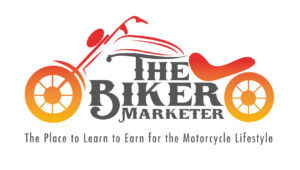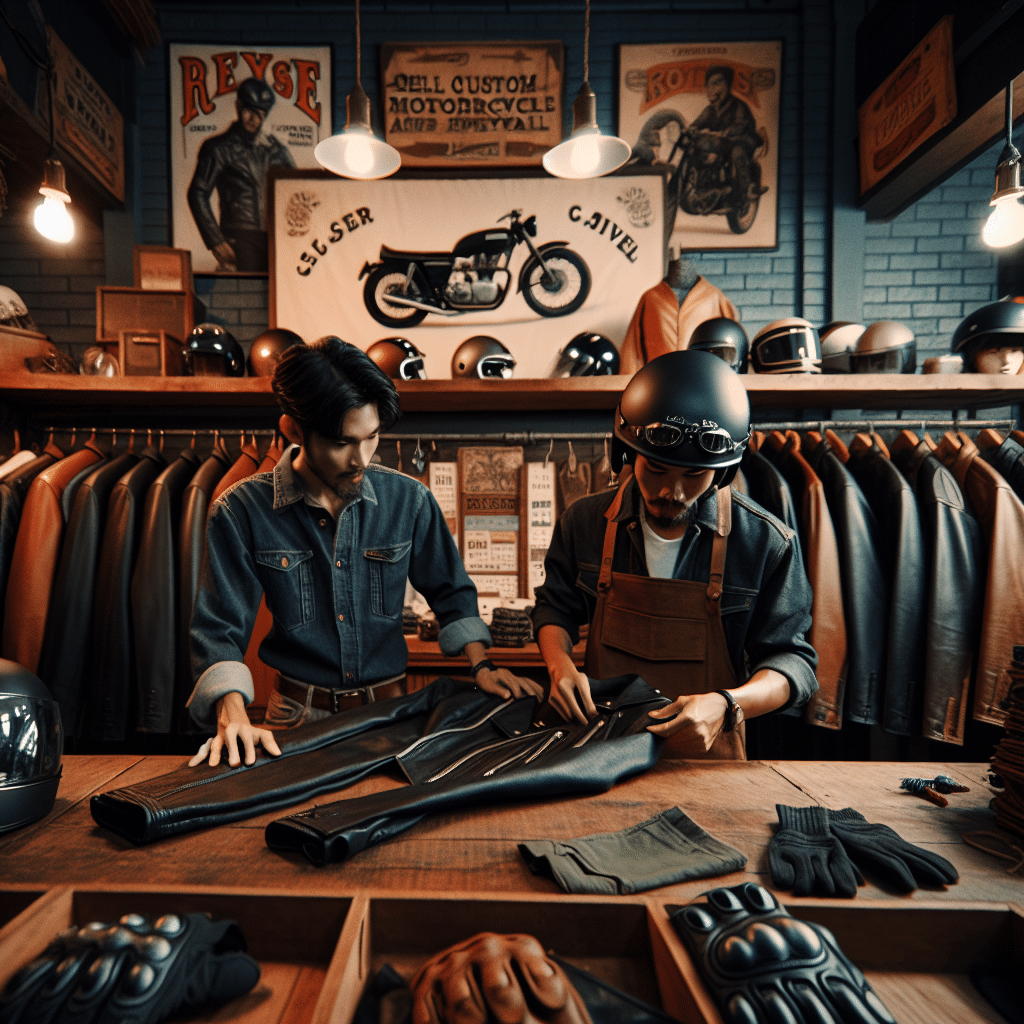Step 1: Identify Your Niche
Understanding the Market
First things first: you gotta know who you’re selling to. The motorcycle world is huge, with tons of different subcultures. Are you targeting hardcore bikers, casual riders, or maybe even those who just appreciate the lifestyle? I’ve found that understanding your audience lets you tailor your designs and marketing strategies effectively, making your apparel resonate with them.
Look into niche communities online, like forums or social media groups. These platforms are goldmines for insight! By engaging with the community, you’ll learn what they’re missing and how to fill that gap. Remember, it’s about selling not just a product, but also a lifestyle.
Once you’ve pinpointed your niche, create detailed customer personas. These profiles should include age, purchasing habits, preferences, and what they value in apparel. Trust me, this groundwork pays off down the line.
Finding Your Unique Selling Proposition (USP)
Your USP is what sets you apart from the rest. Maybe it’s the designs, the materials you use, or perhaps the sustainable practices you follow. Think about what makes your custom motorcycle apparel unique. Craft your brand story around it!
Don’t shy away from sharing your own personal history with motorcycles. Your journey can resonate with customers. When they see the passion behind the product, it creates a personal connection that’s hard to replicate.
Take feedback seriously; it’s a fantastic way to refine your USP. Ask potential customers what they think of your ideas. Their input can provide invaluable insights into what will make your apparel stand out.
Research Competitors
Check out what other brands in your niche are doing. Browse their websites, social media profiles, and customer reviews. This research will help you identify what’s working and what’s not in the market.
Analyze their pricing strategies and promotional tactics, too. It’s not about copying them but understanding where you can fill in the gaps. Maybe they offer great designs but lack in customer service; that’s where you can swoop in!
Finally, take a critical look at their strengths and weaknesses. This will not only inform your strategy but also help you position your brand appropriately within the marketplace.
Step 2: Create Your Designs
Sketch Your Ideas
Once you’ve nailed down your niche and USP, it’s time for the fun part: creating your designs! Grab a sketchbook and start doodling your ideas. The best designs often come when you’re just playing around with shapes and concepts.
Whether you’re designing for t-shirts, jackets, or accessories, think about the visuals that will speak to your audience. Incorporate elements like logos, slogans, or even popular bike imagery that resonates with bikers.
Don’t stress about perfection in these initial sketches. Just get your ideas on paper! Later, you can refine them and choose what aligns best with your brand vision.
Use Design Software
Once you have some solid sketches, it’s time to bring them to life using design software. Programs like Adobe Illustrator or Canva can help you create professional-grade designs. If you’re not familiar with these tools, there are also tutorials available online to help you get started!
Make sure your designs look good on various apparel types. A design that pops on a t-shirt might not have the same appeal on a hoodie. Play around with colors and placements to find what works best.
Also, create mock-ups of your apparel. This visual representation can be a powerful marketing tool, granting a sneak peek of what your customers can expect!
Test the Market
Before fully launching, I recommend testing the market with a small batch of your designs. This could be a limited-edition run or a pop-up at local motorcycle events. This will not only give you insight into customer reactions but also allow you to gather feedback on your designs.
Engage with your audience during this testing phase. Use social media polls or in-person surveys to gather opinions on colors, styles, and even pricing. The more feedback you collect, the better you can tweak your final products.
Don’t worry about some designs not hitting the mark; it’s all part of the learning process. Use it as a stepping stone to make your apparel line even stronger!
Step 3: Set Up Your Online Store
Choose an E-Commerce Platform
With your designs ready, the next step is to set up an online store. There are plenty of e-commerce platforms to choose from, like Shopify, WooCommerce, or Etsy. Each has its perks, so consider what aligns with your tech skills and business needs.
Shopify is user-friendly and has great customer support, perfect for newcomers. If you’re more tech-savvy, WooCommerce can be customized to fit your exact needs. Pick what feels right for you!
Also, take the time to select a domain name that reflects your brand. A good domain is memorable and can enhance your online presence. Trust me, this is the first step to creating a professional image in the digital world.
Design Your Storefront
Your online store is the face of your business, so make it visually appealing! Use high-quality images of your apparel and ensure your website matches your brand’s style. Whether it’s rugged and tough or sleek and modern, keep that theme consistent.
Include informative product descriptions that not only talk about the product but also tell a story. Share the process behind the design, or how it connects to motorcycle culture. The more connection you create, the better!
Make sure your site is easy to navigate. Customers should be able to find what they’re looking for without hassle. A well-organized store helps reduce cart abandonment and improves sales!
Set Payment and Shipping Options
Now that your store looks awesome, let’s set up payment and shipping. Offering multiple payment options is a must; some customers prefer PayPal while others may want to use a credit card. Make it easy for them!

When it comes to shipping, consider working with reliable carriers who offer tracking. You want to make sure your customers feel secure when waiting for their orders. And don’t forget to factor in shipping costs when setting prices—nobody likes unexpected charges at checkout!
Lastly, be transparent about your return policy. Clear communication will build trust and ensure a smooth shopping experience, which keeps customers coming back!
Step 4: Market Your Apparel
Leverage Social Media
If you’re not on social media, you’re missing out! Platforms like Instagram and Facebook are great for showcasing your custom motorcycle apparel. Post engaging content such as photos, behind-the-scenes looks at your design process, and even videos of people rocking your gear.
Engage with your audience by responding to comments and messages. Building a community around your brand can lead to loyal customers who promote you within their circles!
Consider collaborating with influencers in the motorcycle niche. Their validation can introduce your brand to a wider audience, driving traffic to your online store.
Attend Events and Rallies
Don’t underestimate the power of in-person marketing. Local motorcycle events, shows or rallies can be a fantastic way to showcase your apparel. Set up a booth and interact with potential customers face-to-face.
Bring along some samples and marketing materials so people can get a feel for your products. Offering limited-time discounts or promotional items can entice people to make a purchase on the spot.
Networking with other vendors and riders can also open doors for collaborations down the line, benefiting everyone involved.
Email Marketing
An email list is one of your most valuable marketing assets. Start building it early by offering a discount or exclusive content in exchange for email sign-ups on your website.
Regularly update your subscribers with new product launches, promotions, or even interesting motorcycle news. Personalize your emails to keep your audience engaged and interested in what you offer.
Keep in mind, consistency is key! A regularly scheduled newsletter keeps your brand fresh in the minds of your customers, encouraging repeat visits to your store.
Step 5: Manage Growth and Customer Feedback
Monitor Your Sales and Inventory
Once you’ve launched, it’s crucial to keep a close eye on your sales and inventory. Track which designs are performing well to optimize your production. If a certain style is flying off the shelves, consider creating similar designs to capitalize on that success!
It’s equally important to monitor inventory levels. You don’t want to be caught in a situation where demand outstrips supply, leading to frustrated customers waiting on backorders.
Use tools or software that can help you streamline this process, making it easier to manage your growing custom apparel business.
Solicit and Analyze Customer Feedback
Always be open to customer feedback. Whether it’s through reviews, social media, or direct email, listen to what your customers have to say about your products and service. Constructive criticism can be your best friend!
Analyze this feedback and look for patterns. If multiple customers suggest changes or express satisfaction with a specific design, take it to heart! Adjustments based on customer input can lead to increased loyalty and stronger sales.
Don’t forget to thank your customers for their suggestions. A simple ‘thank you’ can go a long way in fostering a positive brand relationship!
Plan for Future Growth
As your business gains traction, it’s essential to have a plan in place for future growth. This could mean expanding your apparel line, exploring new marketing avenues, or even considering retail partnerships.
Think strategically about your next steps. What products could complement your existing line? What new markets might be worth exploring? Having a clear vision will keep your business moving forward.
Lastly, keep investing in yourself and your business. Whether it’s through learning new marketing strategies or improving your design skills, staying adaptable is key to long-term success.
FAQ
1. What is the most important step in selling custom motorcycle apparel?
The most important step is identifying your niche. Knowing your audience allows you to tailor your designs and marketing strategy effectively, making your apparel more appealing.
2. How can I market my custom motorcycle apparel effectively?
Using a mix of social media marketing, attending events, and leveraging email marketing can be effective. Engaging directly with your audience builds community around your brand, which can help drive sales.
3. Do I need to learn design software to create my apparel designs?
While it’s not strictly necessary, learning design software can greatly enhance the quality of your designs. Tools like Adobe Illustrator can help you produce professional-looking graphics that pop.
4. How important is customer feedback for my apparel business?
Customer feedback is extremely important! It can guide your design decisions and help you understand what works and what doesn’t, leading to improved satisfaction and repeat business.
5. What should I do if my apparel isn’t selling?
First, analyze your designs and marketing strategies. Are you targeting the right audience? Seek feedback from customers and peers to understand what might need adjustment, and be open to pivoting based on that input.


